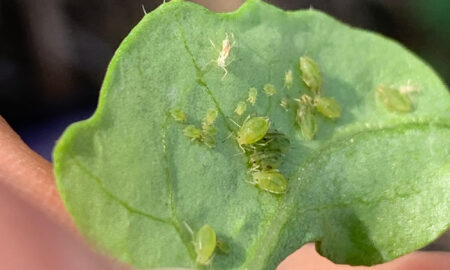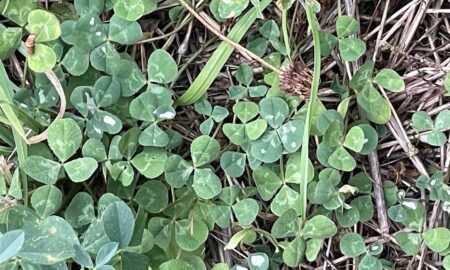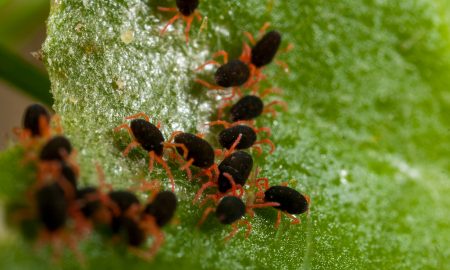Armyworms and ‘herringbone caterpillars’ continue to be found together in cereal and lentil crops in the Victorian Mallee, and in one extreme case they have wiped out vast areas of a wheat crop in the Victorian Wimmera.
Where have they been reported?
Since the last issue of PestFacts south-eastern, armyworms (Persectania dyscrita) in conjunction with what we are calling ‘herringbone caterpillars’ (most likely Proteuxoa atrisquamata) have been found in several lentil and barley crops, southeast of Swan Hill in the Victorian Mallee. As with most of other reports we have had this season, the damage has predominantly consisted of the lower branches of lentil crops being severed, and in cereal crops, damage to leaves.
In one case, a combination of armyworms and ‘herringbone caterpillars’ has completely defoliated the majority of two wheat paddocks on sandy soils, north of Nhill in the Victorian Wimmera (see photo). The affected paddocks (owned by an absentee farmer who had not seen this damage occur) have been planted to wheat for the third year running, with the stubble left standing; they also have a considerable ryegrass weed problem. In damaged areas, the green leaf content of wheat plants (about 10 cm high) had been entirely stripped away as the caterpillars fed in a mass moving outwards in search of more food.
About these caterpillars
For more information on observations of ‘herringbone caterpillars’ refer to this PestNote. For comprehensive information on armyworms, including their occurrence, lifecycle, behaviour and management strategies, see this armyworm PestNote.

Our advice
Ensure correct identification of caterpillars before deciding on the most appropriate management action required. The use of insecticides in early spring to control caterpillars may be necessary to protect crops (although be aware of the trade-off in eliminating the beneficials that, in many cases, moderate aphid and caterpillar populations. The loss of beneficials can often induce earlier or secondary pest outbreaks. In the case of armyworms, our model predicts the current generation is very likely to cease feeding and pupate by mid-late September, well before most cereal crops are susceptible to head lopping.
Acknowledgements
Sources of field reports
Rick Rundell-Gordon – Swan Hill Chemicals (Victorian Mallee)
Alana Govender and Garry McDonald – cesar
Matthew Zanker – Grower (Victorian Wimmera)
Cover image: Photo by Andrew Weeks, Cesar Australia





